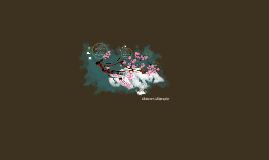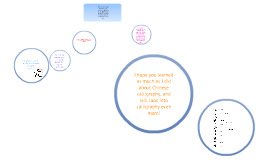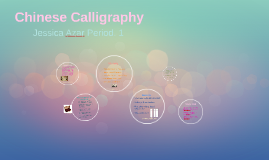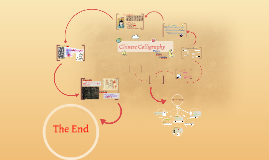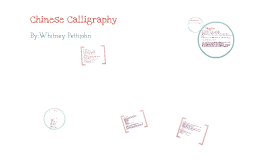Chinese Calligraphy
Transcript: •Two categories •Simple characters have very few strokes •Composite characters can have as many as three parts •The parts of a composite character can be structured in different ways such as o Upper part and lower part o Left part and right part o Inner part and outer part o Upper pat, central part, and lower part o Left part, central part, and right part •The parts of a character that show up often in different characters are used as a key or cataloging system used to find characters easily in a dictionary. Also known as the bushou. 6 Types of Characters (Liushu) • 3 sub categories o Elemental/atomic o Compound o Other •Xiangxingo Means pictograph o Driven from drawings of animals and other objects •Zhishi o Ideogram formed from an abstract idea •Huiyi o Created with multiple components o Semantic and Semantic •Xingsheng o Created with multiple components o Semantic and Phonetic •Zhuanzhu o Deals with the pronunciation of a character •Jiajie o Created by taking many characters and creating new ones that had nothing to do with the original meaning, but had a phonetic resemblance. •“Writing inscribed on bones and shells” •An old mandarin named, Wang Yirong, and his doctor, when he was sick, in 1899, discovered it •4,568 different pictographic signs were found on 154,600 pieces of bone and shell, only 1,700 of those signs have been translated •1999, Li Yun, came up with an accurate way to translate all of the signs using a numerical system, which he later used to make a computer program that translated it. •Probably the first form of Chinese writing, although many would disagree •May have been different variations of some characters such as the character for dragon. •King Tang started this when he wanted a way for everybody to remember his accomplishment forever.•Chief advisor gave the idea that there should be something inscribed on all the things the king just purchased.•Chief advisor bumped up to prime minister and head of the project, had to get the characters made by him and his helpers approved throughout the process. •Many kings afterwards had wanted this done for them as well.•Majority of Jinwen has been translated•Many Chinese don’t know how to read or write it•Some artists have learned in order to sell their work at very high prices. •Qin Shihuangdi was the first Chinese Emperor and he had control over all of ancient China. •He wanted to have a common language among all of the people, so he had a scholar named Zhao Yunshao, who specialized in Jiaguwen and Jinwen to come up with a language that combined the two forms of writing. •A simpler version of the two •Made common characters for o Weights and measurements o Numbers o Means of transport o Ceremonial protocols o Sacrificial rites o The cardinal directions o Agriculture o Domestic animals •A base for modern Chinese •Decoration in reception rooms and cultural meeting places. •The next emperor, Liu Bang, thought that it should be simplified even further. •Held a meeting with a hundred calligraphers at a Taoist monastery with a feast.•He picked people to come up with this new version by having them write as much as they could as fast as they could. •Wang Qikun then came up with Lishu•Years afterwards a dictator took over and decorated the pavilions in the Imperial Palace with Lishu calligraphies. •Empress started a tradition of having symbols put on a jade bracelet or necklace as well as plaques put in the bedroom, for a new borne to display the concern of all parents and their wish of good health for their child.•Next emperor, Liu Che, tried to get everybody to read and write with Xiaozhuan and Jinwen again, but he was unsuccessful. •200BCE, people still thought that Lishu was too complex so they simplified the characters even more •Created the official standard Chinese characters called Kaishu •Uses horizontal and vertical lines •Han then became the official name for Chinese •Emperor, Liu Xie, came up with many basic words/characters that would be incorporated in many other characters •Emperor wasn’t ever officially classified as a linguist or calligrapher •He helped come up with eight kinds of basic lines and nine additional compound lines for Chinese characters •Published manual with examples of ideal Chinese calligraphy •Doesn’t have rules•Follows the symbols of Kaishu•Artist named Zhou Yuguang came up with a cursive method of writing the characters, because he didn’t want to follow the rules of Xiaozhuan•Many people liked the style of writing•Very hard to read •Still used today•Said to exhibit the author’s mood at the time of writing •Combination of Caoshu and Kaishu •Somewhat of a semi-cursive script •Fashioned by a well-known poet named Qiu Yanlian, although he refused to accept any form of acknowledgement for it. •Children today are still taught how to write using Xingshu. •Not every Chinese person practices calligraphy•Considered a fine art and is therefore taught in the first year of art, at schools•Calligraphotherapy is a form of therapy






